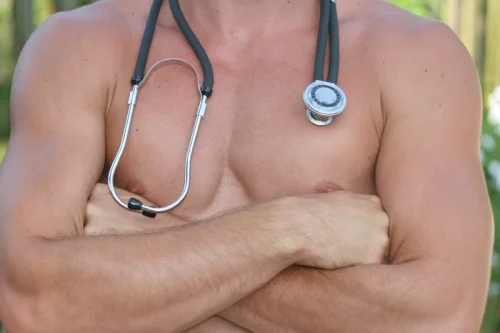
The brain regulates your body’s basic functions, enables you to interpret and respond to everything you experience, and shapes your behavior. A chemical substance that binds to and blocks the activation of certain receptors on cells, preventing a biological response. Animal and human studies build on and inform each other, and in combination provide a more complete picture of the neurobiology of addiction. The rest of this chapter weaves together the most compelling data from both types of studies to describe a neurobiological framework for addiction. In an opioid overdose, a medicine called naloxone can be given by emergency responders, or in some states, by anyone who witnesses an overdose. At age 88, Robert DuPont, M.D., advocates for treatment research, long-term treatment with outcome reporting, mental health treatment parity (as important as physical health), and prevention.

in 10 women are delaying motherhood because of disordered eating
Specifically, the results confirm that the risk of cannabis may have been overestimated in the past. At least for the endpoint of mortality, the MOE for THC/cannabis in both individual and population-based assessments would be above safety thresholds (e.g. 100 for data based on animal experiments). In Germany, alcohol consumption results in approximately €57 billion in direct economic costs annually, according to data from the Federal Ministry of Health.

Promoting and Protecting the City’s Health
For women, heavy drinking means more than three drinks in one day or more than seven drinks a week. They may mistakenly think that those who use drugs lack moral principles or willpower and that they could stop their drug use simply by choosing to. In reality, drug addiction is a complex disease, and quitting usually takes more than good intentions or a strong will. Fortunately, researchers know more than ever about how drugs affect the brain and have found treatments that can help people recover from drug addiction and lead productive lives.
- The goal of detoxification, also called “detox” or withdrawal therapy, is to enable you to stop taking the addicting drug as quickly and safely as possible.
- Currently, the MOE results must be treated as preliminary due to the high uncertainty in data.
- Recently, Roberts et al. 2017, evaluated the efficacy of VAR in alcoholic subjects who reported symptoms of depression.
- These executive function deficits parallel changes in the prefrontal cortex and suggest decreased activity in the Stop system and greater reactivity of the Go system in response to substance-related stimuli.
- Reinforcing and motivational effects of ethanol were studied by using various doses of fenofibrate (Haile & Kosten, 2017).
How does science provide solutions for drug use and addiction?

Reviews of the current literature show that many drugs and medications such as anticonvulsants, antipsychotic and antidepressants are under preclinical and clinical trials for the treatment of AUDs. Previously we have reviewed on the status of FDA approved and some other medications for the treatment of AUDs (Heilig & Egli, 2006). In the present article, we have why is alcohol addictive focused on the existing medications and the repurposing of the FDA approved medications for the prevention and treatment of AUDs with a list of potential medication candidates, as summarized in Figures -1 & -2, and Tables -1 & -2. In addition to this, the novel medications with potential therapeutic use and in various stages of development are discussed.
Many governments in Europe have favoured more restrictive policies with respect to illicit drugs than for alcohol or tobacco, on the grounds that they regard both illicit drug abuse and related problems as a significantly larger problem for society58. Drug rankings can therefore be useful to inform policy makers and the public about the relative importance of licit drugs (including prescription drugs) and illicit drugs for https://ecosoberhouse.com/ various types of harm58. There may also be physical signs such as red eyes, a persistent cough, and change in eating and sleeping habits. Alcohol or drug dependency may include blackouts, withdrawal symptoms, and further problems in functioning at home, school, or work. The authors of the case report pointed out that those in the advanced stages of alcohol addiction often consume any alcoholic liquid they can access.
- Eight-weeks of nalmefene treatment reduced alcohol consumption in individuals with BPD and comorbid AUD (Martin-Blanco et al., 2017).
- In addition, the relapse rate was shown to be lower in the patients receiving topiramate, suggesting that a low dose of topiramate was effective in reducing craving, symptoms of depression and anxiety (Paparrigopoulos et al., 2011).
- Such statements taken out of context may be misinterpreted, especially considering the differences of risks between individual and the whole population.
- However, as the percentage of tolerant users is generally unknown, the most probable value of MOE would lie in the range between non-tolerant and tolerant users (the gray-marked area in Figures 1–3).
- The sensitivity analysis data for tolerant users are additionally shown in Figure 1–3 based on the ratio between no-tolerance and high tolerance dosage as shown in Table 227,37,42,43,44,45,46,47,48,49,50,51,52,53,54.
- The major health issue that results from binge drinking is gut leakage and organ damage.
- The potential interaction of alcohol with ABT-436 and the pharmacological effect of ABT-436 was assessed by measuring serum cortisol.
- The chapter explains how these substances produce changes in brain structure and function that promote and sustain addiction and contribute to relapse.
- Since, AUDs continue to be a major socioeconomic and health concern all over the world, there is an urgent need for conducting more applied, translational research for better prevention and treatment strategies that will provide better options for the patients and have minimal side effects.
- Reviews of the current literature show that many drugs and medications such as anticonvulsants, antipsychotic and antidepressants are under preclinical and clinical trials for the treatment of AUDs.
National Institute on Alcohol Abuse and Alcoholism (NIAAA)

